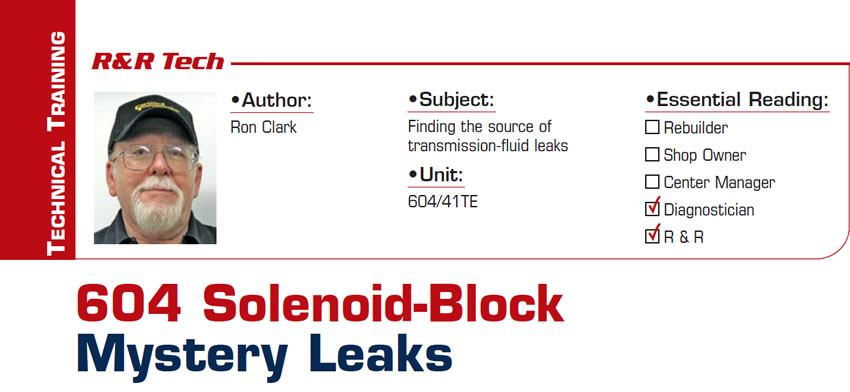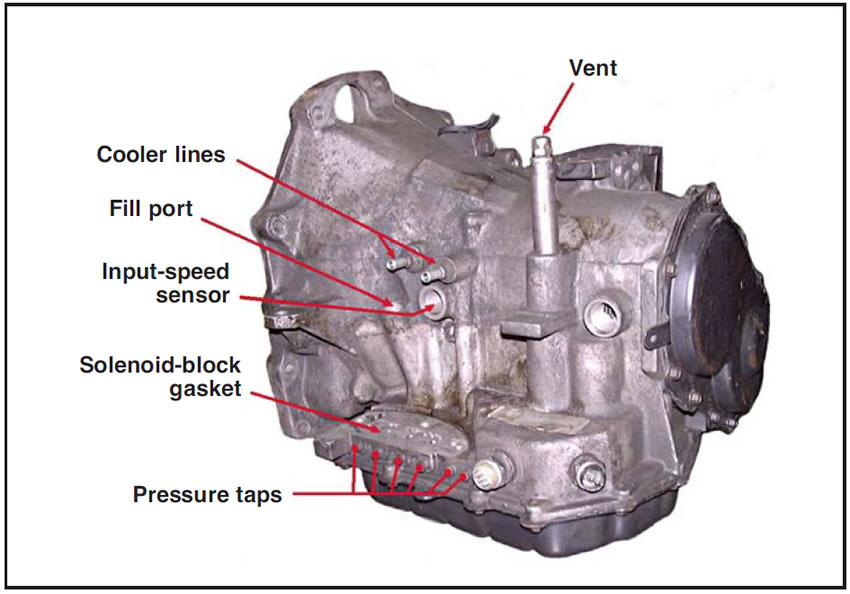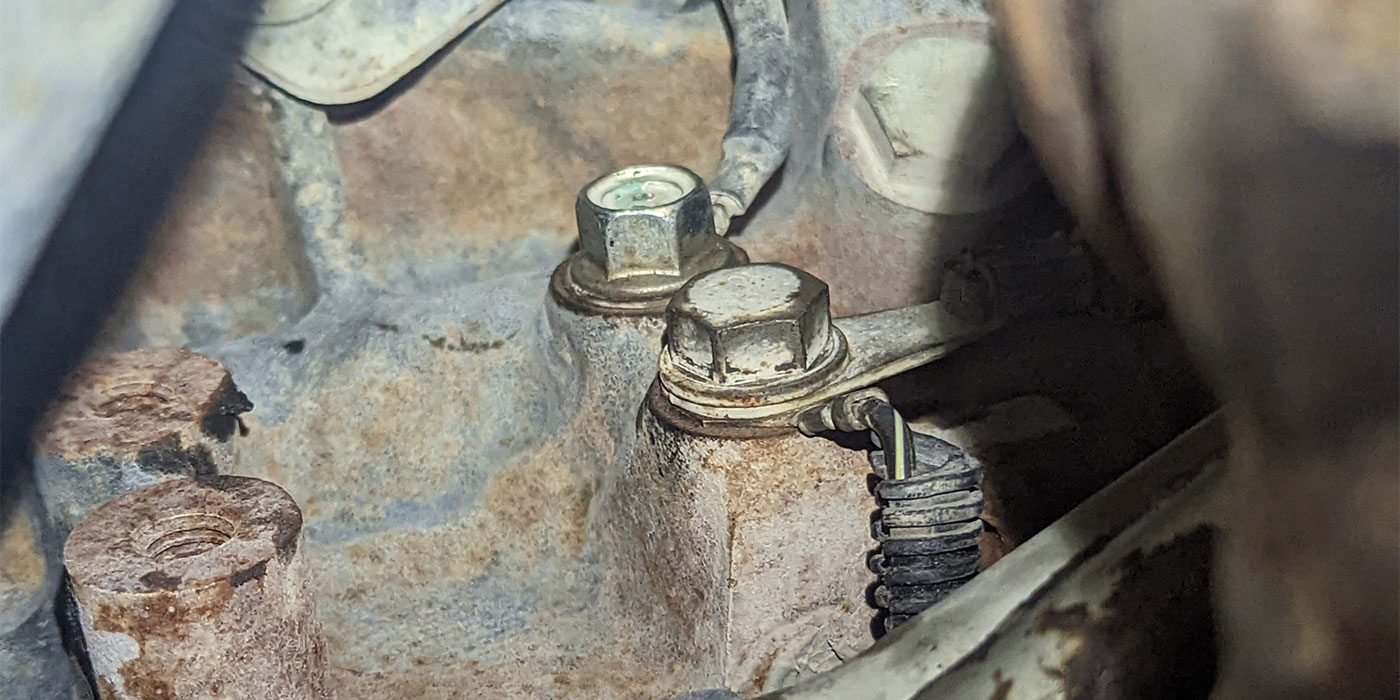
R&R Tech
- Subject: Finding the source of transmission-fluid leaks
- Unit: 604/41TE
- Essential Reading: Diagnostician, R & R
- Author: Ron Clark
The 604/41TE has been around for some time and we are all pretty familiar with it; however, some things still pose a challenge on this transmission, and one of them is leaks.
Over time we have seen numerous fixed-in-vehicle reports that have solenoid packs being replaced for leaking. In response to that, three years ago we made a special test plate so our rebuilt solenoid blocks can be charged with compressed air and then sprayed all over with a soapy-water solution. Any air escaping would then show up as bubbles in the soap and would expose the leak. Before that we had an occasional one or two blocks that would leak on the dynos; now that has gone away and we don’t see that problem anymore.

What hasn’t gone away is solenoid blocks that are being replaced and reported as fixed in vehicles for a leak. Of the blocks that we get back, we are usually unable to find any leaks, unless the pack has been externally damaged in some way.
It is my experience that the oil leakage that the block is being blamed for usually came from somewhere else and ran down onto or around the solenoid block. There are cooler lines (notorious leakers), a fill port, pressure taps, vent and an input-speed sensor, all just above and around the solenoid block. Plus, it could be just plain oil spillage from filling the transmission with fluid – easy to do. In any event all these places and possibilities should be investigated thoroughly before just assuming the block is leaking and replacing it – expensive if it’s replaced and doesn’t fix the problem.
Oil always runs from the highest point down. To find the source of the leak, follow the oil trail up as far as it goes; always look to the highest possible leak source first. This goes for just about any leak on anything; follow it up as far as the trail goes and you’ll usually find the culprit.
If you’re not having any luck because the leak trail is hard to see, there are dyes available to make it easier for you. Run the transmission for a while to mix the dye in with the transmission fluid, then with a black light the leak trail will show right up. If it happens to be a slow leak, you may need to ask the customer to drive it for a few days, then bring it back for a black-light inspection.
Illustrated in the photo are some of the areas to check as possible leak sources, and don’t forget to look at the back of the engine as well; motor-oil leaks are often mistaken for transmission leaks.
Along with noises and vibrations, leaks can be hard to find; the one thing to remember when hunting them is to always look up and follow the trail.

Ron Clark is the technical director in Certified Transmission’s solenoid department and works on product specifications and troubleshooting problems.













